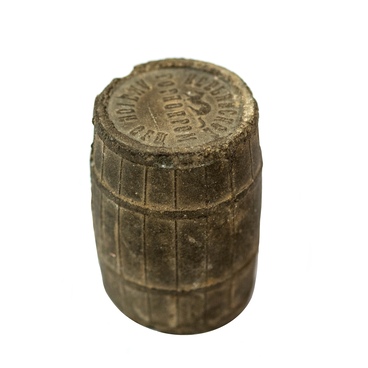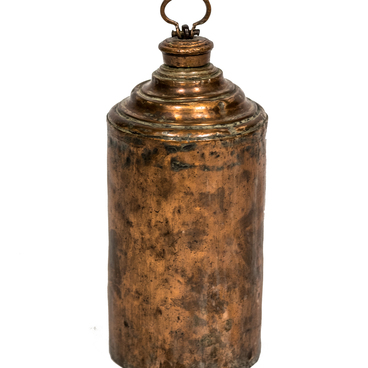A bardiche was a cold weapon, a kind of battle axe with an elongated curved blade on a long shaft. Russian infantry soldiers, mainly archers, used it since the 15th century. The blade of the bardiche could pierce the enemy’s light armor; the tip was often used like a spear, inflicting stab wounds. The shaft could serve as a support during firing from a heavy hand cannon or other similar weapons.
Bardiche and cold weapons
Время создания
17th–18th century
Размер
150 cm; spear: 28 cm; bardiche: 44 cm
Техника
Metal, wood, forging, casting
Коллекция
8
Открыть в приложении#1
Bardiche and cold weapons
#7
#16
Spears were another well-known type of weapon in the Russian state. They were used by both the infantry and the cavalry: the weight and length of the shaft varied accordingly. Massive narrow tips of durable metal (also called “feathers”) pierced enemy armor. Light, short spears sometimes were thrown like darts.
#17
Another popular type of cold weapon was the flail. It consisted of a heavy metal striking head fastened to a wooden handle with a leather belt, a chain or a rope. Its prototype was the flail, an agricultural tool used by peasants to thresh the grain. Before striking, the flail was spun: this made it possible to hit harder.
#18
The arsenal of soldiers of the 16th–17th centuries included bardiches, spears, flails, and firearms (hand cannons and mortars). In particular, they were used by the soldiers of Cossack ataman Yermak in the Siberian campaign, which took place in the fall of 1581 under an agreement with the Stroganov salt producers. During this campaign, Yermak defeated the army of Siberian Kuchum Khan, captured the capital, Isker, and conquered Siberia, annexing it to the territory of the Russian state.
#19
On September 1, 1581, 500 Cossacks, led by Yermak, boarded their riverboats and moved from the town of the Stroganov salt producers in the Lower Chusovaya area to Siberia. The troop traveled by water, sometimes by dragging, along the rivers Kama, Chusovaya, Serebryanka, Kokuya, Boronchuk, Tagil, and Tura, and then along the Siberian rivers Tobol and Irtysh. In October 1582, the Cossacks won the battle against Kuchum Khan’s army near the Chuvash cape on the Irtysh. In addition to cold weapons, they were armed with hand cannons and mortars, which gave Yermak’s troops a significant military and technical advantage. The Tatar army was armed in the old-fashioned way: sabers, daggers, spears, battle axes. The combat capability of the troops of the Siberian Khanate was at a high level for the nomadic world, but it could not resist the Cossacks' advanced weapons and combat experience. Yermak entered Isker, the capital of the Siberian Khanate, and Kuchum fled to the south. In December 1582, Yermak sent an embassy to Moscow with the news of the “Siberian conquest”.
#20
State Autonomous Cultural Institution of the Sverdlovsk Region "Nevyansk State Historical and Architectural Museum"
читать дальшескрыть
00:00
00:00
1x
Bardiche and cold weapons
Время создания
17th–18th century
Размер
150 cm; spear: 28 cm; bardiche: 44 cm
Техника
Metal, wood, forging, casting
Коллекция
8
Открыть в приложении
Поделиться

